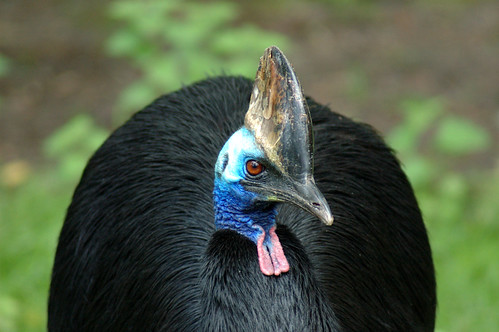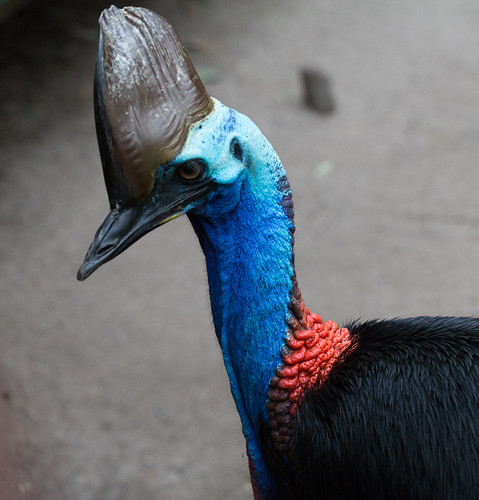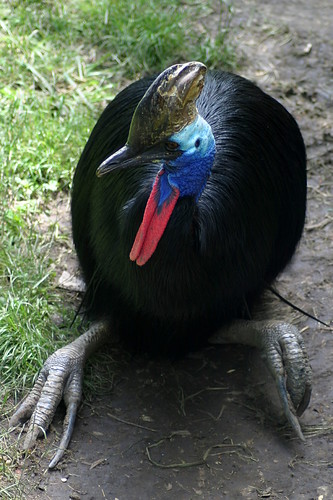Today we're talking about cassowaries! The cassowary was one of last week's #dailyzoodle prompts and I realized a lot of people didn't know much about them. That means a perfect animal for Wildlife Wednesday!
The cassowary is one of my most favorite birds. Ready to learn some interesting facts about them?
 There are 3 types of cassowary: Double-wattled Cassowary (Southern Cassowary), the Dwarf Cassowary, and the Single-wattled Cassowary (Northern Cassowary)
There are 3 types of cassowary: Double-wattled Cassowary (Southern Cassowary), the Dwarf Cassowary, and the Single-wattled Cassowary (Northern Cassowary)They can be found in the rain forests of Papua New Guinea and North Eastern Australia.
The Double-wattled Cassowary is the species people are usually most familiar with.
 by Raphael Quinet
by Raphael Quinet Cassowaries belong to group known as Ratites. This group is made up of ostriches, emus, and rheas all of which are large flightless birds.
The cassowary is most closely related to the emu.
The cassowary is the 2nd heaviest bird in the world. The ostrich is the heaviest bird.
The cassowary is the 3rd tallest bird in the world.

 by Flavia Brandi
by Flavia Brandi Cassowary feathers aren't designed for flight, but they help protect them from the elements and sharp thorns in the rain forest.
Cassowaries can't fly, but they can run really fast! Up to 30 mph through the jungle.
Cassowaries are also excellent swimmersCassowaries can jump almost 7 ft straight up!
Cassowaries are solitary. They are hard to study in the wild so we don't know much about their natural behaviors.
Cassowaries mainly eat fruit. They also eat grasses, seeds, leaves and bugs.
In the past cassowaries had no predators in their natural environment. Humans have brought not only deforestation to their habitats, but also cats and dogs, which eat their eggs and destroy their nests.
 by A.J. Haverkamp
by A.J. Haverkamp Cassowaries lay up to 8 eggs at a time. The males incubate the eggs and care for the chicks when they hatch.
Cassowaries make a loud booming sound. It is the lowest known call of any bird and is right at edge the of our hearing. It can be heard from up to 3 miles away.
Cassowary comes for the Papuan words for "horned head".
All 3 species of cassowary have a helmet, or casque on the top of their head. The casque starts to form at age 2. It is made of a sponge like material that is covered with a thick layer of keratin (the substance that makes up your fingernails).
No one knows exactly what the purpose of the casque is. It constantly grows, so it might be a way to show age or dominance. It might be because it helps them get through the rain forest vegetation. It may help them communicate, much like the hornbill’s casque does. It also might be for defense.
 by chimothy27
by chimothy27 Cassowaries are often called the most dangerous birds in the world. They have a dagger like claw on their inner toe. With a quick kick, they can slice open a predator.
Cassowary wattles can be blue, red, gold, purple or white depending on the subspecies. The dwarf cassowary is the only species that doesn't have a wattle.
Cassowaries are very important to the rain forests for dispersing seeds through their droppings.
What do you think of cassowaries?









